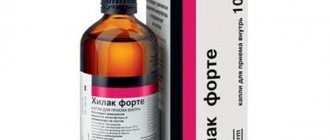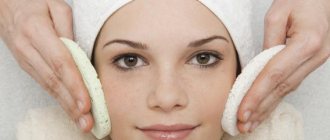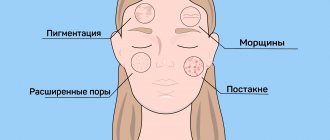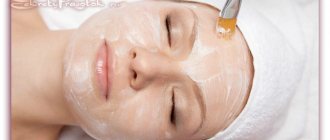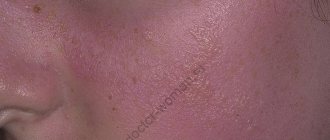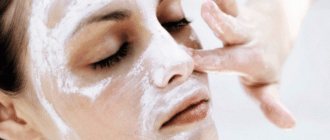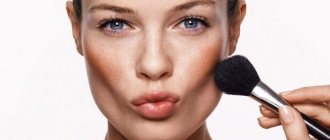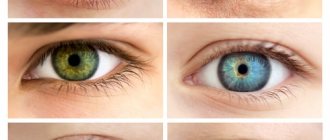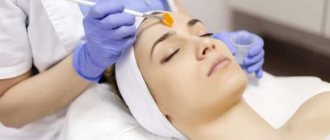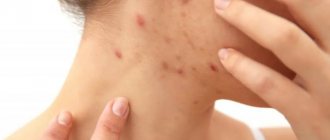Peeling stimulates the renewal of the epidermis, eliminates minor surface defects, gives the face radiance and visibly rejuvenates it.
Let's look at how chemical peels work, who is recommended for such procedures, and what results you should expect.
The name of the procedure comes from the English verb “to peel” - to exfoliate, cleanse, remove the crust. The cosmetic name of the procedure is exfoliation (exfoliation, cleansing). With the help of peeling, the top layer of the epidermis is removed - dead cells that spoil the complexion, give the skin an unhealthy appearance and make it difficult to breathe.
This can be done in different ways: mechanically (using a scrub), using a laser or special compositions that stimulate cell exfoliation. The last option is called chemical peeling.
What it is?
Healthy skin is constantly renewed, and the upper - horny - layer of the epidermis consists of dead cells. They gradually peel off, giving way to new ones. If this process slows down, the layer of dead cells becomes too thick. As a result, the breathing of the skin is disrupted, its surface becomes uneven, the complexion deteriorates, and other defects appear.
They contain acids that dissolve dead cells and stimulate the process of exfoliation of the upper layer of the epidermis. More concentrated formulations affect both the middle and deep layers of the skin.
At its core, the procedure is a controlled damage (chemical burn) to the skin. The body reacts to such exposure with intensive restoration and cell renewal: damaged layers are replaced with new ones. As a result, the face looks much younger and fresher.
The history of chemical peelings began in ancient times, when beauties used wine, fruit juices and fermented milk products to prolong their youth. The development of chemistry in the late 19th and early 20th centuries gave women effective but unsafe peelings using concentrated acids and toxic substances. They were popular with the most desperate ladies who wanted to preserve their beauty for many years at any cost. Only later, at the end of the 20th century, when scientists studied the properties of alpha hydroxy acids (AHA), modern superficial and medium peels appeared - delicate but effective. Such procedures quickly gained popularity, and now cosmetology clinics offer a wide variety of options to suit every taste.
Are there complications and side effects?
As a rule, deep facial peeling, the photo of which you see, statistically causes a greater number of complications. Therefore, this effect is carried out in a cosmetology clinic with the participation of a cosmetologist and an anesthesiologist. Chemical exfoliation may cause the following side effects:
- Soreness lasting several hours;
- Redness, the intensity of which directly depends on the depth of exposure. After superficial exfoliation, redness subsides within a day, after medium or deep exfoliation it persists for up to a month;
- Intense peeling, itching;
- Allergy to the active substance used in the procedure. This side effect will not occur if you use an antihistamine.
Complications, such as the consequences of facial peeling, photos of which are presented below, are characterized mainly by intense effects on the skin. They may be as follows:
- Facial burn with high concentration acids. This usually occurs due to incorrect choice of drug and exposure time, as well as due to the fault of an incompetent specialist;
- Rashes, acne and follicles can be the result of incorrect use of the cream to speed up the healing of the epidermis. This complication can be corrected with antibiotic therapy;
- Infection with fungus or bacteria is a consequence of failure to maintain sterility and can lead to scar formation. In this case, appropriate therapy with antiseptics and fungicides is used;
- An exacerbation of herpes virus infection occurs if the patient had areas of herpes before the procedure. This can be avoided by taking antiviral drugs;
- Increased pigmentation is temporary, but may persist for 2 years after the procedure. Pigment spots are usually removed with hydroquinone;
- Reduced pigmentation is typical for patients with dark skin; it can become permanent;
- The appearance of spider veins, which may become more noticeable after exposure to chemicals, but are easily removed with laser therapy;
- The appearance of demarcation lines;
- Scar formation is rare and is preceded by constant itching and redness.
Superficial facial peeling, the photo of which is presented in the article, quite rarely causes complications and side effects, since the impact on the skin in this case is minimal.
Varieties
Depending on which layers are affected by chemical compounds, there are three types of peelings:
- Surface. The most gentle procedure that can be carried out even at home (in this case, the most gentle preparations with a minimum content of active ingredients are used). The area of influence is limited to the epidermis (stratum corneum), living cells are not affected. The acid concentration is low (up to 20%), the treatment process is painless, and recovery does not take much time. The effect accumulates, so superficial peelings are carried out in courses that consist of 5-10 sessions. By the end of the course the effect reaches its maximum. The procedure evens out and improves complexion, giving the skin velvety, fresh, smooth and tender. Superficial peelings are often used as part of complex procedures, as they improve the penetration of beneficial substances from masks, serums, and creams into the dermis;
- Median. In this case, more concentrated (30-40%) drugs are used, which act not only on the epidermis, but also on the dermis (papillary layer). Intense exposure allows you to achieve a noticeable rejuvenation effect, eliminate post-acne and wrinkles. However, this option is more damaging to the skin than the previous one. For this reason, it is not recommended for everyone; moreover, medium peeling can only be entrusted to a professional cosmetologist in the clinic. An example of a medium peel is the TSA peel with trichloroacetic acid. Such peels are now used extremely rarely due to the large number of side effects;
- Deep. The impact extends to all layers of the skin, including the basal layer. To treat the skin, phenol is used, a toxic substance, which is supplemented with compounds that prevent the rapid absorption of the drug. This is a very aggressive and traumatic procedure related to surgical manipulations; it is necessarily carried out using anesthesia and only in a hospital. Deep effects can significantly rejuvenate the face and get rid of such serious defects as scars, but it is recommended to do it only in adulthood (over 60 years old) and no more than once in a lifetime. The recovery period after such manipulation can take six months.
The higher the concentration of acids, the stronger the burn, the more the skin is injured, and the more actively it is restored.
Peels for home use should not be overestimated: the acid content in them is minimal, and the effect cannot be compared with the results of procedures performed in the clinic. When creating cosmetics, manufacturers rely on safety, so that even if used incorrectly, you cannot harm yourself.
Professional products are a completely different matter. They are designed for specialists who strictly follow protocols and strictly follow all recommendations. That is why even a course of superficial peelings in the clinic provides a noticeable rejuvenation effect (detailed study of the usefulness of chemical peels).
The effectiveness of peelings depends on the concentration of active substances, pH (the higher it is, the less damage to the skin), application technique and number of layers, exposure time and the previous preparation procedure.
Photos of the consequences after peeling
Unfortunately, this cosmetic service does not always end with a brilliant result. A number of reasons can lead to negative consequences. You've probably seen an unsuccessful photo of a peeling done in a salon or at home. An unexpected result occurs for the following reasons:
- Incorrectly selected type of impact;
- Incorrectly selected chemical reagent, its concentration, exposure time of the reagent;
- The patient has diseases or allergic reactions;
- Insufficient qualifications of a cosmetologist;
- Antiseptic conditions, etc.
Any type of exfoliation can cause the effects of facial peeling. Photos before and after the procedure indicate the occurrence of redness, swelling and peeling. Normally, these manifestations disappear during the rehabilitation period, the duration of which depends on the depth of exposure. If this does not happen, you should consult a doctor. The most glaring complication is a large burn, which leads to the formation of scars.
Attention! Severe itching, peeling, a prolonged rehabilitation period or deterioration in general condition are a serious reason to seek medical help. Chalking in this case is dangerous to health!
Indications
Superficial peelings allow you to solve the following problems:
- Improving the quality of the skin;
- Leveling the surface of the epidermis;
- Elimination of pigmentation;
- Improved complexion;
- Narrowing of pores;
- Improving turgor, elasticity;
- Reducing the manifestations of post-acne;
- Preparation for cosmetic and surgical interventions.
Medium varieties have a more intense effect and can also combat:
- Wrinkles;
- Pronounced pigmentation;
- Post-acne;
- Flabbiness;
- Stretch marks;
- Scars;
- Hyperkeratosis.
Deep peels are indicated for patients over 60 years of age with pronounced age-related changes, scars, cicatrices and pigmentation.
In most cases, it is recommended to start with a course of superficial peeling, which is useful not only in itself, but also as a preparation for more intense effects.
Peeling is a universal procedure that is suitable for patients of all ages. If in adulthood it is recommended for renewal and rejuvenation of the skin, then for young girls peelings help cope with post-acne, enlarged pores and other defects. Regular exfoliation of the surface layer of the epidermis is also useful for acne, but in this case it is recommended to combine peeling with other procedures, for example, ultrasonic cleansing and mesotherapy.
Contraindications
- Inflammation, rashes (including allergic ones), violations of the integrity of the skin in the treatment area;
- Any acute (exacerbated chronic) diseases, febrile conditions;
- Exacerbation of herpes;
- Hypertension;
- Oncological diseases;
- Aggressive influences on the treated area less than two months before peeling;
- Taking certain medications, incl. increasing photosensitivity;
- Pregnancy and lactation;
- Psoriasis, rosacea, telangiectasia (only the most delicate peels are indicated);
- Large birthmarks in the treatment area;
- Fresh tan;
- Individual intolerance to components.
The list of contraindications may vary depending on the type and concentration of the active substance.
The procedure for rosacea is prescribed with caution. It is not recommended to carry out the course in spring and summer for those who spend a lot of time in the sun.
What problems does peeling solve?
As a rule, exfoliation is recommended for aged (after 35 years) and problem skin. The main indications for prescribing peelings include:
- dry, dull, aging skin
- long-term inflammatory skin diseases, such as acne and acne, which are characterized by the formation of pustules (pustules), comedones (blackheads) and, as a result, scars
— wrinkles (age-related, expression lines)
— premature age-related changes in the skin due to exposure to ultraviolet rays (photoaging)
– pigmentation (dark spots and freckles)
- scars, cicatrices, loss of clarity of the oval of the face
How is peeling performed?
Acid peeling is a seasonal procedure that is recommended during the cold season. This is due not so much to the air temperature, but to the fact that in autumn and winter the sun is much less active than in summer, which means the risk of pigmentation is reduced.
The procedure consists of several stages:
- Cleansing. The doctor removes remaining cosmetics and impurities using neutral products. After this, the surface of the epidermis is thoroughly dried;
- Application of the drug. Peels can be in the form of aqueous solutions, gels, thick creams. The denser the consistency, the more delicate the effect. In any case, the product is applied first to denser, and only then to more delicate areas of the skin;
- Removing a tool. Depending on the type of peeling, the drug remains on the face from 1 to 15 minutes. After this, you can proceed to the next stage. There are also peelings, for example yellow peeling, with which the patient goes home and washes off on his own after a few hours;
- Neutralization. A preparation is applied to the treated areas, which tones, refreshes and soothes the epidermis, moisturizes it and neutralizes the effects of acids. The neutralizer should also be left on the face for a few minutes and then washed off with water. If you skip this step, burns may occur;
- Hydration. After removing the neutralizer, a moisturizing cream, gel, serum or mask with a soothing effect is applied to the face. At this time, the skin is especially receptive, so the effect of cosmetics is extremely effective.
Before leaving the clinic, you must protect your epidermis with SPF cream.
Features of the facial peeling procedure
Translated from English, the word “peeling” means “to wash”, “to clean”. Therefore, this event is intended to deeply cleanse the facial skin, remove sebum and impurities, and eliminate dead cells from the surface of the skin.
After exfoliation of the stratum corneum, a renewed, fresh layer of epidermis appears. Young skin better absorbs oxygen and moisture, which normalizes metabolic processes, increases resistance to external negative factors, and improves cell nutrition.
There is an opinion that peeling is just a rejuvenating procedure. However, there are different types of facial peels that have their own characteristics. The basis for its implementation depends on the specifics of a particular procedure. General indications include:
- sagging and sagging skin;
- excessive pigmentation;
- the presence of a thick keratinized upper layer of the epidermis;
- consequences of acne.
Thanks to cleansing, age-related changes become less pronounced. Skin regeneration helps reduce deep or expression wrinkles. Peeling allows you to restore the structure of the skin layer, eliminating defects (microscars, age spots, various scars). In addition, during the procedure, the sebaceous glands and pores are cleansed, it serves as a prevention of inflammatory processes and acne.
Cleaning is not contraindicated for any skin type (dry, normal, oily).
Peeling is a fairly traumatic procedure, so it has a number of limitations:
- overly sensitive skin;
- presence of damage (wounds and abrasions on the face);
- age less than 18 years;
- acute stage of acne or herpes infection;
- pregnancy, lactation;
- tendency to allergies.
Peeling allows you to eliminate various defects and helps maintain healthy, fresh skin. The necessary conditions are the supervision of a professional and the implementation of all recommendations.
What compounds are used
Preparations for peeling are selected individually depending on the characteristics of the skin and its condition. The higher the acid concentration, the more effective the effect, and the less suitable this option is for delicate, sensitive skin. Different types of acids also differ greatly from each other. Depending on the size of the molecules and the depth of penetration, they can act more or less delicately, which means they are suitable for different skin types.
The most popular types of chemical peels:
- Almond. This is a superficial peeling based on mandelic acid, which has an exfoliating, moisturizing, and antiseptic effect. Due to its large size, the mandelic acid molecule penetrates shallowly into the skin and acts very gently. Almond peels do not increase photosensitivity and can be used all year round. Finally, it is an optimal choice for problematic, impure skin, as mandelic acid prevents the formation of comedones and clears out crusts. The course consists of 6-10 procedures;
- Pyruvic (summer). Another gentle option for year-round use. This superficial peeling uses pyruvic and lactic acids, which stimulate cell regeneration, moisturize the epidermis and tighten pores. The procedure is suitable for dry and sensitive skin;
- Yellow. Retinoic acid, which can be used for both superficial and mid-level peels, has a rich yellow tint, which gives the procedure its name. It must be borne in mind that after such exposure the epidermis also acquires a yellowish tint for some time. The acid penetrates deeply into the dermis and triggers regeneration processes. This is a good choice at the first signs of aging, since the procedure has a pronounced rejuvenating effect, and also tightens the skin, gives it elasticity, and regulates the functioning of the sebaceous glands. Like other medium peels, it requires special preparation;
- Biophytopilling. This is a superficial peeling based on hydroxyl acids, supplemented with plant extracts and vitamins. The procedure instantly improves the condition of the skin and complexion, gives the epidermis elasticity and smoothness. Biophytopilling is carried out in courses and is suitable for any skin except very dry skin;
- Melaspil. The drug contains salicylic and hydroxypropionic acids, as well as resorcinol and depigmenting agents. Medium peeling is optimal for combating hyperpigmentation; it perfectly whitens, rejuvenates the skin and improves its condition. Not suitable for dark skinned people;
- PRX-T33. This product is specially designed for sensitive and dry skin. After the procedure, there is no peeling of the skin, but the dermis is intensively renewed under the influence of trichloroacetic acid TCA, kojic acid and peroxide;
- Trichloroacetic. This option is famous for the fact that it effectively tightens enlarged pores, improves complexion, and eliminates signs of photo- and chronoaging;
- Jessner peeling. Mid-surface version based on salicylic and lactic acids with resorcinol. Recommended for oily or aging skin. Depending on the number of layers applied to the face, it is used as a surface or middle layer;
- Salipil (anti-acne). A drug based on salicylic acid is used, has a pronounced anti-inflammatory effect and helps fight rashes. Also suitable for mature skin;
- Depigmenting. As the name suggests, this variety is designed to combat hyperpigmentation. For such peels, various acids can be used alone or in different combinations. Whitens and rejuvenates, gives freshness and matteness;
- Fruit. In this case, fruit acids are used. Depending on the concentration, they have a gentle or more intense effect on the epidermis. Suitable for any age, especially effective at the first signs of aging. A good choice for problematic, rash-prone skin;
- Glycolic. The acid contained in green grapes and sugar cane is used. Due to its low molecular weight, it penetrates well into the skin and has an effective effect. Suitable for refreshing all skin types, smoothes out fine wrinkles, tightens pores and eliminates pigmentation well;
- Lactic. In this case, the acid contained in fermented milk products, as well as blueberries, tomato juice, grapes, and apples is used. It has a pronounced exfoliating and moisturizing effect.
The cosmetologist selects the appropriate option depending on the condition of the epidermis and existing defects.
What is the difference between mono- and multi-acid peels?
Peeling can consist of either one type of acid - these are called mono-acid peels, or two or more - these are multi-acid peels. The combination of acids allows you to solve several problems at once and achieve more visible results.
You won’t be able to get a multi-acid peel by simply mixing several acids: some of them negatively affect each other and can seriously harm the skin.
That is why the selection of concentrations and working ingredients is best left to professionals. Together with dermatologists and chemist-technologists, the ARAVIA Professional brand has developed four “cocktails” of the MG Peel System, intended for both young problem skin and aging wrinkled skin. It is based on proprietary combinations of acids that provide maximum results and minimal discomfort - thanks to optimal concentration and a comfortable pH of 3.0.
Rehabilitation
After chemical peels, you need to take good care of your skin to give it a chance to recover. First of all, hydration is necessary. It is recommended to use products with hyaluronic acid, panthenol, aloe and vitamins. In addition, you should avoid any aggressive procedures, the use of alcohol-containing cosmetics, retinoids, and mechanical scrubs. When crusts appear, you cannot remove them yourself - you should be patient and wait until they fall off spontaneously.
It is extremely important to protect your face from ultraviolet radiation. The renewed epidermis is especially sensitive to such effects, so the risk of age spots increases. So the use of protective lotions with a high SPF factor is mandatory not only in the summer (when peeling is generally not recommended), but also in the winter.
To maintain the effect, your doctor may recommend using special cosmetics containing acids. They can be included in creams for everyday use in low concentrations sufficient to preserve the results for a long time.
After superficial treatment, the skin is restored quickly, however, during the entire course and two weeks after its completion, careful care and avoidance of any aggressive influence are necessary.
Contraindications:
- The procedure is not recommended for pregnant and lactating women;
- When taking medications based on isotretinoin;
- For herpes and skin diseases;
- When taking antibiotics;
- For oncological diseases;
- For open wounds.
After a chemical peel, the skin is more sensitive to sunlight, so after the procedure it is necessary to use sunscreens and products.
Before the procedure, the cosmetologist must take into account many factors and ask all the necessary questions so that the procedure is as comfortable as possible for the client and gives the best result with the fewest possible side effects.
Effect
After a course of procedures, the face becomes fresh and youthful. Peels are very popular precisely because the results are clearly visible. It can be appreciated not only by attentive observers - even casual acquaintances will notice a clear improvement in the condition of the skin.
Compliments are guaranteed after the first sessions, and by the end of the course:
- Improves and evens out complexion;
- Wrinkles are smoothed out and disappear;
- Elasticity and turgor increase;
- Pigmentation disappears;
- The skin becomes smooth and soft;
- Acne goes away;
- Scars are smoothed out, incl. from post-acne;
- Pores tighten;
- The functioning of the sebaceous glands is normalized.
Peeling courses combine well with other cosmetic procedures - both hardware and injection. A cosmetologist will tell you how best to combine different types of treatment to achieve optimal results.
When are peelings used?
Due to its complex effect on the skin, the procedure has a wide range of indications and is recommended for the following problems:
- dull complexion, loss of skin tone and turgor;
- age-related changes: fine and deep wrinkles, skin ptosis;
- problematic and oily facial skin;
- dermatological skin diseases – acne, acne, post-acne;
- aesthetic skin defects - scars, scars, stretch marks;
- pigment spots, enlarged pores.
Cost of acid peeling in a beauty salon
The cost of the procedure is affected by the type of acid used and its concentration. In addition, the price depends on the drugs used after cleansing the skin. The formation of the price tag is influenced by the rating of the salon, the region where it is located, as well as the qualifications and experience of the specialist performing the procedure. The average cost of a session is approximately 2,500–16,000 rubles.
The price also depends on the type of cleansing procedure. For example, superficial peeling will cost from 2,500 to 3,500 rubles, medium peeling can be done for 3,000–5,000 rubles, and deep peeling will cost from 5,000 to 6,000 rubles.
If the procedure is carried out using trichloroacetic acid, its cost will be 6,000–7,000 rubles. Peeling with retinoic acid is one of the most expensive. Its cost is approximately 11,000–16,000 rubles.
Why clients choose Veronika Herba Beauty and Health Center:
- This is a beauty center where you can take care of yourself at a reasonable cost, while your face and/or body will be treated not by an ordinary specialist, but by one of the best professionals in Moscow. This is a completely different, higher level of service!
- You can receive qualified help at any time convenient for you. The beauty center is open from 9:00 to 21:00, seven days a week. The main thing is to agree with your doctor in advance on the date and time of your appointment.
Sign up for a consultation with a specialist by phone +7 (495) 085-15-13
, and you will see for yourself!
Ultrasonic facial peeling
This type of peeling refers to hardware procedures for surface cleaning, which involves removing dead cells and cleansing contaminated pores.
What happens to the skin during laser peeling
Laser peeling can be hot or cold. During the cold peeling procedure, the laser beam hits only the deep layers of the skin without damaging the epidermis. This way there is no open wound on the face and the risk of infection is eliminated.
During cold laser peeling, an area of traumatized skin is formed in the areas where the laser is pinpointed. There the recovery process begins immediately.
Read also: Wrinkles on the nose
Hot FT-lifting intensively warms up all layers of the skin and initiates the activation of metabolic processes in the skin. The carbon laser completely destroys the skin at the point of its impact. The entire face is covered with such pinpoint wounds. At the site of damage, cells begin to actively recover and divide, and this causes a lifting effect.
Skin care after laser peeling
A day after the end of the session, you will feel a raw pain and burning sensation in the treatment area. To minimize discomfort, you can use painkillers and sedatives.
After a day or two, a film will begin to form on the skin, and a brown tint may appear. Then this condition is replaced by abundant exfoliation. Swelling and redness gradually decrease over 10 days.
Immediately after the procedure, you should begin using restorative anti-burn agents. They must be applied every three hours. These are foams and gels based on panthenol. Antimicrobial drugs are also indicated - chlorhexidine and miramistin.
After each type of peeling, there may be certain expected consequences. Before you put yourself in the hands of a cosmetologist, they need to be discussed and remembered. And if suddenly something goes “not according to the script,” then you need to immediately call or run to the doctor so as not to start the problem.
Indications and contraindications for acid peeling
Acid peeling is a universal procedure; it can be used for the face and whole body. It helps eliminate stretch marks, make the skin more elastic and improve its tone after childbirth or sudden changes in body weight. The permitted age for acid peeling is 18 years and older. This procedure is considered especially effective for caring for problematic acne-prone skin. Acid peeling often precedes biorevitalization and mesotherapy.
Reasons for acid peeling for the face:
- presence of facial wrinkles;
- loss of elasticity and skin aging processes;
- enlarged pores;
- presence of pigmentation;
- dry and dehydrated skin;
- comedones;
- the skin is lumpy and dry.
Acid peeling makes the face fresher. The skin takes on a rested appearance, its tone is restored, scars and scars are evened out. With regular use of such peeling, the secretion of the sebaceous glands is significantly reduced, and the formation of comedones stops. In dry skin, after manipulation, the water balance and pH level are normalized.
Contraindications:
- damage to the skin (wounds, scratches, cuts);
- the skin is prone to allergic reactions that cause swelling and rashes;
- infectious diseases (rosacea, psoriasis, ARVI, herpes and others);
- previously unsuccessful cleaning with ultraviolet or laser;
- oncology;
- inflammation occurring in acute form;
- pregnancy and breastfeeding.
A specialist will help you choose the safest and most gentle product for any skin, even if it is super problematic. However, for each specific case, an individual peeling agent and tactics are selected.
